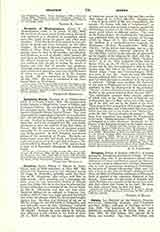www.catholic.com/encyclopedia/serapion


Click to enlarge
Serapion, Bishop of Antioch (190-211), is known principally through his theological writings. Of these Eusebius (Hist. eccl., V, 19) mentions a private letter addressed to Caricus and Pontius against the Montanist heresy; a treatise addressed to a certain Domninus, who in time of persecution abandoned Christianity for the error of “Jewish will worship” (Hist. eccl., VI, 12); a work on the Docetic Gospel attributed to St. Peter, in which the Christian community of Rhossus in Syria is warned of the erroneous character of this Gospel. These were the only works of Serapion with which Eusebius was acquainted, but he says it is probable that others were extant in his time. He gives two short extracts from the first and third.
PATRICK J. HEALY
Enjoying this content? Please support our mission!Donatewww.catholic.com/support-us

